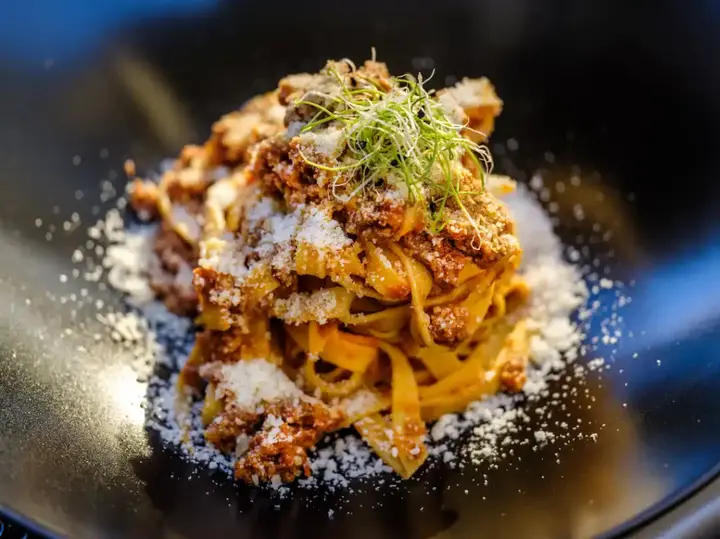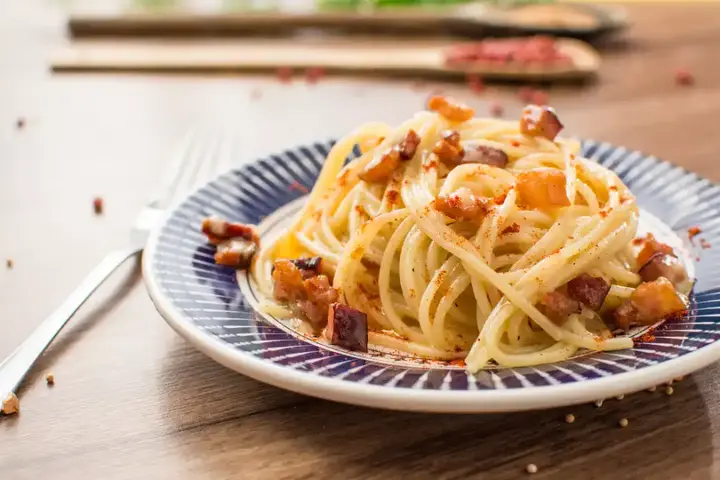Fake Italian dishes: 7 "Italian" dishes that will surprise you

Italian food is one of the most popular cuisines in the world, with dishes such as pizza and pasta widely served. However, while a number of our favourite "Italian" dishes still have their roots in Italy, many have been modified over the years as they become more popular. In fact, it may surprise you to know that many of the dishes we might consider "Italian" are not actually Italian at all.
Show key points
- Many popular "Italian" dishes like pizza and pasta have been significantly altered over time and may not reflect authentic Italian cuisine.
- Italians are deeply particular about food preparation, including pasta shapes, sauce pairings, and even coffee-drinking habits.
- Numerous well-known dishes such as spaghetti with meatballs, garlic bread, and creamy carbonara are American interpretations, rarely found in Italy.
- ADVERTISEMENT
- In Bologna, the authentic ragu sauce, often mistaken for "Bolognese," is traditionally served with tagliatelle, not spaghetti, and contains little tomato.
- Common items like pepperoni pizza and Italian salad dressing are actually American creations with little or no connection to traditional Italian recipes.
- Italian coffee culture emphasizes simplicity, where asking for a latte might get you just milk, and elaborate coffee drinks are frowned upon.
- To experience and learn genuine Italian cooking methods, enrolling in an online cooking class with authentic Italian chefs is highly recommended.
Food is a big part of Italian culture, which means Italians can be very strict about how it is prepared and cooked. What shape of pasta goes well with a particular sauce, when certain types of coffee are drunk, and what herbs or other ingredients should or should not be added to certain dishes are all of great importance. But as always happens with immigration, dishes change when they arrive in another country, adapting to the tastes of the people who live there, and to the ingredients available. Therefore, many dishes that you probably think are traditional Italian, are actually modified, and it is very difficult to find them in Italy itself.
Recommend
If you want to learn how to prepare authentic Italian dishes, why not join one of our online cooking classes? You'll learn from our talented Italian chefs, and have fun with new friends at the same time! Below we present some traditional examples of "Italian" dishes that are not actually Italian! Some of them may surprise you...
1. Thin pasta with bolognese sauce:

Head to Bologna, Italy, and you'll not find thin pasta served with bolognese sauce, but only broad pasta (tagliatelli). In the territory of Emilia-Romagna, whose capital is Bologna, the rago is presented Bolognese (Polish-style ragu). There, the sauce is called ragu (not bolognese). In the UK they are just starting to use the word ragu to describe meat pasta sauce. Broad pasta (tagliatelle) is used instead of thin pasta (spaghetti) because it retains the meat sauce better. Another big difference is that real Polish-style rago will be more meat-containing than the intensive tomato sauces served in the UK; in Italy they use only a little tomato paste and no chopped tomatoes at all. The original rago recipe, documented by the Italian Kitchen Academy and recorded by the Bologna Chamber of Commerce, consists of beef and bacon, carrots, celery stalks, onions, tomato paste, white wine and milk.
2. Spaghetti and meatballs:

Spaghetti: Yes; Meatballs: Yes, but spaghetti with meatballs: Never. Italian meatballs are called "polpette". In most parts of Italy, these meatballs are fried and eaten as is, often as a second dish without sauce. The thing Italians sometimes do is insert a small cube of Fontina cheese into the meatball before dipping it in flour and frying it. This gives her a oozing heart when chewed. In southern Italy, Italian meatloaf, or "bolbitone", which literally means "big meatballs", is often served with tomato sauce prepared directly in the pan with some chopped onions and tomatoes. In this type, you can spread polypitone with tomato sauce, but it is never served with spaghetti. But the remaining polypitone can be used with sandwiches, or panini, as Italians call it. Perhaps this is the origin of the American "meatball sandwich".
3. Garlic bread:

Italians eat garlic greased on toast but with olive oil, not butter and call it bruschetta. But they roast Italian bread like ciabatta, not French bread, as has become popular in the UK and America. It is certainly not served with pizza or pasta, but served as an appetizer. Bruschetta is most commonly served with fresh chopped tomatoes, a pinch of salt, and a drizzle of good olive oil, called tomato bruschetta.
4. Pepperoni:

In America and the UK, pepperoni is often placed on pizza. But in Italy, the word "pepperoni" means capsicum, and bell pepper in particular. If you order a pepperoni pizza in Italy, you're more likely to get a bruschoto crudo pizza instead of spicy salami. It is said that the meaning of the Italian word "pepperoni" was mixed when the Italians began to migrate to America, and its meaning became meat and not pepper! Despite this, pepperoni is sometimes served in some Italian restaurants, but it is always called spiced salami and not pepperoni. Pepperoni is a word invented by America.
5. Espresso:

Of course, people in Italy drink espresso, but they don't usually call it that – it's simply coffee. Double espresso is called "double coffee". The most common coffee in Italy is a single shot of espresso – coffee – served at an acceptable temperature to drink, and drunk while standing at the bar. On the other hand, as long as we are talking about coffee, Italians only drink coffee in the morning with milk. Either cappuccino or one of the forms of coffee latte: café macchiato (espresso with a little milk), or latte macchiato (hot milk with a little coffee).
Don't just ask for a latte, or you'll get a glass of milk. Don't ask for a drink with a complex label like "soy milk frappuccino and hazelnut syrup", Italians love classic and simple things. They will not have, for example, the option of skimmed or whole milk. If you really want to look like a local, order regular coffee first thing in the morning, an espresso with a little grappa or another alcoholic beverage.
6. Italian sauce:

This term has an Italian name, so it would be perfectly logical to assume that it came from Italy, right? Well, sorry to disappoint you, but Italian sauce is another American innovation. Italians will never complicate salad dressing so much by adding sugar, spices and the like. In fact, in Italy, they often don't additive to salads at all, and if they do, it's probably just a little olive oil.
In fact, the "Italian sauce" was only invented in the mid-twentieth century in North America, when the daughter of Italian immigrants decided to prepare large quantities of her family's salad dressing for her husband's restaurant. It quickly became so popular that it became bottled, and was called "Italian sauce" only because of its Italian origin.
7. Creamy carbonara:

Don't worry, we won't shock you too much here! Carbonara is of course from Italy and is still enjoyed throughout the country to this day. But the creamy carbonara dish we see in many British and American restaurants these days is definitely not Italian.
In Italy, the sauce is prepared simply by stirring the eggs and Parmesan cheese or pecorino with the pasta while still hot. However, the past 20 years have seen heavy cream creep into some carbonara recipes; something Italians won't like at all. Regarding the meat contained in carbonara, only pork cheek (guanciale) should be used strictly even in Italy, where bacon (pancetta) will sometimes be used. But what is considered absolutely unacceptable is the use of bacon in carbonara!








